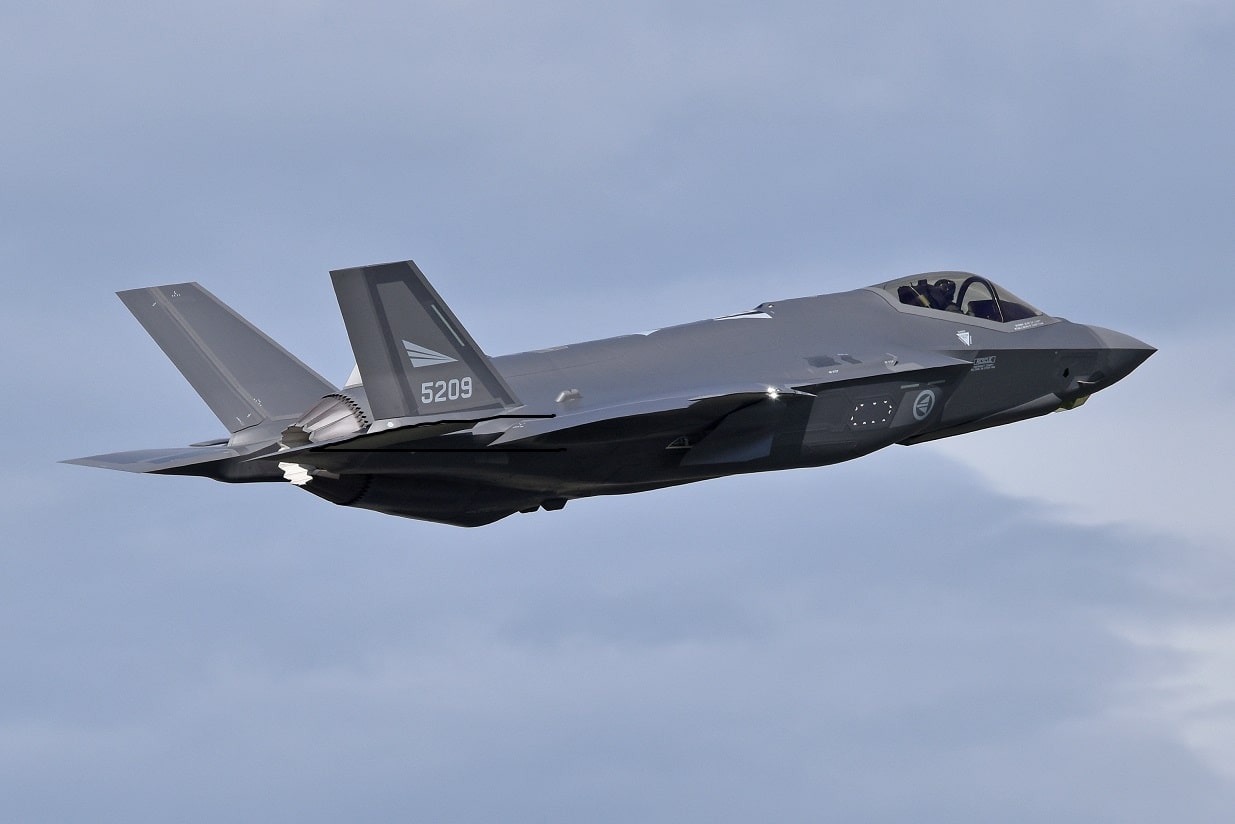Aerospace
United States Air Force’s F-35A, world’s most advanced fighter jet crashes in the US
United States Air Force’s F-35A, world’s most advanced fighter jet crashes in the US

United States Air Force F-35A Lightning II fighter jet crashes in Utah. The F-35, manufactured by defence giant Lockheed Martin, is regarded as the most sophisticated and expensive fighter plane in the world. Just before the collision, the fighter jet’s pilot safely made an emergency landing. The 388th Fighter Wing (388FW), located at the air base, reported the incident on October 19th.
Switzerland signs deal to buy 36 F-35A fighter jets from US(Opens in a new browser tab)
The 34th Fighter Unit of the 388FW was the first wing to have an operational F-35A squadron. The Hill Air Force Base runway’s north end is where an F-35A Lightning II crashed at around 6:15 p.m., according to a tweet from the wing. “Emergency crews from both on and off base responded immediately.
The precise squadron to which the downed fighter plane belonged has not, however, been disclosed by the 388FW. The Lockheed Martin F-35A Lightning was returning from a regular training flight, said Colonel Craig Andrle, commander of the 388FW.
10 Most Expensive Fighter Jets In The World(Opens in a new browser tab)
According to Andrle, who was quoted by CNN, “all of us as pilots take every opportunity we have to limit the damage to anything on the ground,” the pilot “did his best attempt to avoid any buildings or anything on the ground prior to ejection.”

Aerospace
Boeing Transfers Rocket Stage to NASA, Paving Way for Human Moon Mission

Boeing has achieved a significant milestone by providing NASA with the second core stage of the Space Launch System (SLS) rocket.
This crucial component, crafted at NASA’s Michoud Assembly Facility (MAF), is set to propel the Artemis II crew into lunar orbit, marking humanity’s return to deep space after a 50-year hiatus.
The monumental Boeing-built rocket stage, the largest element of the Artemis II mission, will embark on a journey aboard the Pegasus barge, traveling 900 miles to NASA’s Kennedy Space Center.
Comparison of two legendary aircraft B777x vs B747 aircraft:Click here
Upon arrival, it will be meticulously integrated with other essential Artemis II components, including the upper stage, solid rocket boosters, and NASA’s Orion spacecraft within the iconic Vehicle Assembly Building. This intricate integration process is a vital step toward the eagerly anticipated Artemis II launch, slated for 2025.
“Boeing-built products helped land humankind on the moon in 1969, and we’re proud to continue that legacy through the Artemis generation,” remarked Dave Dutcher, vice president and program manager for Boeing’s SLS program. “Together, with NASA and our industry partners and suppliers, we are building the world’s most capable rocket and paving the way to deep space through America’s rocket factory in New Orleans.”
NASA, Lockheed Martin Reveal X-59 Quiet Supersonic Aircraft:Click here
The delivery of Core Stage 2 marks a significant achievement in the evolution of the SLS rocket. Towering over 200 feet and powered by four RS-25 engines, this core stage, coupled with two solid-fueled booster rockets, will generate a staggering 8.8 million pounds of thrust. This immense power is crucial to launching Artemis II and future missions into the vast expanse of space.
The SLS rocket stands unparalleled in its capability to transport both crew and substantial cargo to the moon and beyond in a single launch. Its extraordinary capacity will facilitate the delivery of human-rated spacecraft, habitats, and scientific missions to destinations including the moon and Mars, ushering in a new era of space exploration.
-

 Travel1 week ago
Travel1 week agoAir India to Expand US Operations with Three New Routes After a Decade
-

 Travel2 weeks ago
Travel2 weeks agoWhy We Should Avoid These Stamps in a Passport
-

 Airlines1 month ago
Airlines1 month agoInvestigations Reveal Fake Chinese Titanium in Boeing and Airbus Jets
-

 Tech4 weeks ago
Tech4 weeks agoChina’s CATL Plans 1,800-Mile Electric Plane Launch by 2027
-

 Airport3 days ago
Airport3 days agoTop 10 Largest Airports in the World by Size
-

 Aerospace4 weeks ago
Aerospace4 weeks agoChina’s Fighter Jets Turn Wings into Autonomous Drones
-

 Airlines4 days ago
Airlines4 days agoAir India Rolls Out A350s for Delhi-New York JFK and Newark Routes
-

 Defence3 weeks ago
Defence3 weeks agoBoeing Enhances Chinook with New Engines and Block II Upgrades at $96 Million







